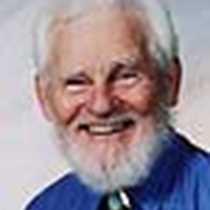Mouth of the Columbia River
Stars appeared overhead at dawn as we passed beneath the Megler Bridge, but they disappeared almost immediately when storm clouds rolled in from the west. As we approached the Columbia River Bar, rain began to fall in short scattered showers. The sun rose behind us through a thin veil of rain. Cormorants and gulls accompanied us; then jagged lines of brown pelicans appeared off our starboard side, crossing before the National Geographic Sea Bird, dozens of them until our count rose to more than 500.
We enjoyed a smooth ride until we turned around in plan sight of the bar, rolled briefly, then headed through the showers toward Astoria where we breakfasted on National Geographic Sea Bird fare. When we appeared on deck to visit the Maritime Museum, we discovered that two humongous cruise ships had appeared to flood the town with hundreds of tourists who occupied the town until mid-afternoon, though only a few wandered into the museum while we were there.
Once we left the museum, our expedition visited Fort Clatsop, winter quarters for Lewis and Clark and the Corps of Discovery, and we saw little more of them. At Fort Clatsop, we found more rain, though only for a short while, which seemed appropriate given the Corps of Discovery’s winter there. But it affected little our guests’ enjoyment of the small museum and by the time we went outside, the sun was shining; our walk in the woods after visiting the rebuilt fort replica was fine! The tiny squirrel known as the Chickaree (also Douglas or Pine squirrel), feeding on a Sitka spruce cone, stole the day for those who saw it.
Because Captain George Coughlin had thoughtfully arranged for us to by-pass the dock security checkpoint set up for the large cruise ships’ passengers, we returned to the National Geographic Sea Bird for lunch without a hitch.
In the afternoon we bussed to Lewis and Clark sites on the Columbia River’s north shore, some to hike through Beard’s Hollow to the beach, where we watched the surf and saw a bald eagle; others to visit the nearby Cape Disappointment museum and lighthouse. Some guests visited the Astoria Column while others walked around Astoria, less crowded after the cruise boat passengers had departed. A trio walked back to the ship from the Astoria Column, a long, steep downhill path; two mule deer surprised them up close on the way down.
A brief re-cap by historian Bob Gatten, an introduction to Aldo Leopold by naturalist Verne Huser, and farewell comments by Expedition Leader Cindy Manning and Captain Coughlin led the expedition into our final dinner aboard the National Geographic Sea Bird.




